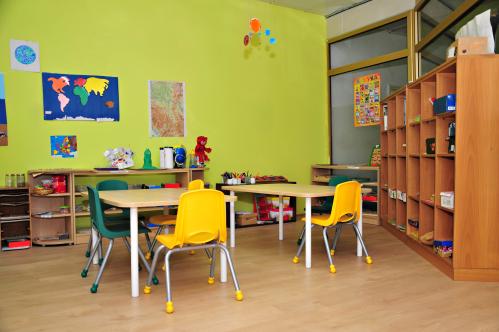Academic performance is declining
Recently released scores from the 2024 administration of the National Assessment of Educational Progress (NAEP) highlight that, contrary to the exam’s title, our nation’s students haven’t been making much progress at all in recent years.
Instead, American students’ overall academic performance has been declining for more than a decade. Today, only 30% of eighth graders are proficient in reading according to NAEP standards, and only 28% are proficient in math.
These declines are not just because of COVID-19. Academic performance suffered a major blow as a result of pandemic-related learning disruptions, but declines in student achievement began around 2013, well before the arrival of the pandemic.
The declines are driven primarily by students in the bottom half of the score distribution. Whereas the scores of top-performing students have declined more modestly over the past decade, the scores of lower-performing students have fallen off a cliff.
Declines in academic performance began before COVID-19 and are driven by students in the bottom half of the score distribution
We focus here on NAEP scores among eighth graders for the sake of simplicity, but these trends are remarkably consistent across grade levels and across different nationally representative achievement tests.
It’s not entirely clear what’s driving the declines. Increased screen time and lower standards are two possible culprits.
The declines are worrisome because academic performance is directly linked with students’ long-term success.
As the labor market places greater value in skills and knowledge amid increased automation, trade, and other factors, the importance of strong academic performance has grown. The primary driver of disparities in college enrollment and completion is weak preparation in the K-12 years. For example, students who score below proficient in third grade reading are four times more likely not to graduate high school compared to their peers scoring above the proficient benchmark.
Perhaps unsurprisingly, then, academic scores are strongly associated with earnings in adulthood, upward economic mobility, and other long-term outcomes such as crime rates and life expectancy. One estimate suggests the pandemic alone may lead to $28 trillion in lost earnings for the affected cohort, or a 6% reduction in their average lifetime earnings, with disadvantaged students being the most affected.
In short, if we don’t act to reverse declining academic achievement, the long-term economic success of our children and the nation will be diminished.
Educational opportunities in America are unequal
Improving struggling students’ academic performance is also needed if we want to give everyone a fair chance at success. From a young age, children from poor and rich families experience highly different educational opportunities both within and outside the classroom. These disparities in opportunity are driven by differences in the family and neighborhood environments in which children grow up and differences in their peer and community networks.
Children who grow up in low-income households are much more likely to be affected by family instability and other stresses that inhibit their learning and development. Children from affluent families benefit from parents who invest more time and money in their children.
As a result, large gaps in cognitive and non-cognitive scores are present at a young age. Children from low-income families (10th percentile) start kindergarten more than a year behind children from high-income families (90th percentile) in reading and math. Black and Latino students begin kindergarten about half a year behind their white counterparts. These gaps tend to stay constant or grow as students age. Black and Hispanic students are more likely to attend high-poverty schools. One researcher finds that young African Americans are ten times more likely than their white peers to live in poor neighborhoods, with 66% of Black youth residing in such areas compared to just 6% of white youth.
Targeted efforts to boost the achievement of struggling students in high-poverty school districts offers one of the most promising ways to improve their long-term life outcomes. One researcher found that if we could close the Black-white gap in academic scores, the staggering Black-white gap in intergenerational economic mobility would essentially disappear.
High-dose tutoring is an effective intervention to improve student performance
There are many ways to improve the academic performance of struggling students and thereby more closely approximate equality of opportunity. These include: increasing funding for schools serving low-income students, reducing class sizes, raising pay for high-performing teachers, enabling low-income families to move to better neighborhoods, establishing a culture of high expectations and achievement, reducing chronic absenteeism, and banning cell phones from classrooms.
One intervention that is especially appealing is what is known as high-dose tutoring. High-dose tutoring is one of the most effective school-based interventions to improve the academic performance of struggling students. It is one of the few school-based interventions that consistently leads to large improvements in academic performance in both reading and math. High-dose tutoring consists of tutoring sessions that:
- Last at least 30 minutes
- Occur three or more times per week
- Pair small groups of one to four students with a tutor who sticks with the same group of students over the course of the school year
One comprehensive review of gold-standard randomized controlled trial studies found that tutoring improves academic scores by 0.37 standard deviations on average, the equivalent of a student progressing from the 50th percentile to the 66th percentile. (For context, that is roughly equivalent to the improvements gained after an additional three to fifteen months of typical academic instruction across grade levels.)
Another study examining the relative effectiveness of various school-based interventions to improve academic performance among elementary and middle school students from low-socioeconomic backgrounds found high-dose tutoring to be the most effective intervention out of the fourteen intervention types considered. High-dose tutoring also has the potential to narrow learning gaps, reduce absenteeism, and boost graduation rates.
Leveraging public service fellows to serve as high-dose tutors would reduce costs
In a recent year, roughly only one out of every ten public school students nationwide received high-dose tutoring. If these programs are so effective and widely supported, why do so few schools offer them?
The largest barrier to scalability is cost. While the estimated benefits exceed the costs, high-dose tutoring programs can cost anywhere between $1,000 to over $3,000 per student annually, depending on the specifics. Labor shortages are another problem. At least 40% of schools report that they cannot maintain high-dose tutoring programs because of difficulties in finding or paying for qualified staff. Many schools used funds allocated for Elementary and Secondary School Emergency Relief (ESSER) by the Biden administration to invest in high-dose tutoring, but those funds dried up at the end of last year.
One way to address these issues is by leveraging public service fellows to serve as full-time tutors. Because public service fellows are willing to work for lower pay than teachers, their involvement would dramatically reduce costs by as much as half. Each year, there are hundreds of thousands more Americans who apply to participate in AmeriCorps and other service programs than there are available spots. That is a large untapped labor pool eager to serve and willing to do this work for low pay.
Exploring blended models that supplement in-person tutoring with computer-assisted learning technologies is another potential way to reduce costs, but these models may not facilitate the mentoring relationships that are a core feature of the program we describe here.
Building up service programs that leverage fellows to serve as tutors especially at the state and local levels offers a cost-effective way to improve academic performance while providing service fellows with a purposeful opportunity to give back.
Already, promising steps have been taken by state, local, and private sector leaders to act along these lines. To name a few examples, state leaders like Governor Wes Moore in Maryland, Governor Spencer Cox in Utah, and Governor Gavin Newsom in California have recently implemented service programs to meet needs in their states. And leaders in Tennessee, Massachusetts, Louisiana, Florida, Minnesota, Chicago, Houston, the Partnership for Student Success, and many others have taken steps to expand tutoring offerings. If funding for these programs at the national level diminishes, state and local leaders should step up to the plate.
A robust research base shows service fellows can be just as effective as teachers at improving student performance, while being able to offer instruction for a much lower cost. One rigorous study found AmeriCorps fellows who provided high-dose tutoring to struggling students in twelve public schools on the south and west sides of Chicago boosted students’ math grades by an average of 0.57 GPA points on a 4.0 scale, improving their grades from a C- to a C+ average, and made them 48% less likely to fail their math course and 26% less likely to fail a non-math course.
The viability of this model is related to its simplification of the teaching task so that even tutors without extensive prior experience can be effective. Small group sizes allow tutors to address the variability in needs across students at different levels of understanding and can help free up teachers to concentrate on the standard curriculum during normal class time.
Another benefit of this model is that it fosters positive relationships between students and tutors and would expose low-income, underperforming students to higher-achieving tutors who tend to be more affluent. This exposure would facilitate the kinds of cross-class relationships research indicates is one of the factors most highly associated with upward economic mobility.
For their part, tutors would gain a greater understanding of the challenges faced by disadvantaged children. One rigorous study shows that individuals who participated in Teach for America became less prejudiced and more empathetic about the challenges faced by their students.
This approach could be part of a broader push for young people to do national service, as we’ve proposed elsewhere. As one of us earlier recommended, using national service fellows as tutors and providing them with “scholarships for service” would be one way to make tutoring less costly while helping qualified high school or college students get some help with paying for college.
Tips for education leaders on how to implement tutoring programs effectively
As the strong results associated with tutoring become better known, there is a risk it will be implemented in ways that reduce its impact. Below we offer recommendations based on research for those designing tutoring programs.
To be most effective, tutoring programs should:
- Be integrated into the school’s schedule and complement the curriculum delivered during normal class hours
- Occur during the school day, not outside of school
- Leverage professionals or paraprofessionals (including service fellows) as tutors, not parents or volunteers
- Include screening, training, and support for tutors
- Assess the effectiveness of tutors periodically and provide them with feedback
- Group students by skill level and language learner status and be mindful when pairing students and tutors to promote trusting relationships
- Target underperforming students while using a framing that avoids stigma
Conclusion
A high-dose tutoring program that leverages public service fellows as tutors would provide tutors with a meaningful way to give back and a greater appreciation for the challenges faced by disadvantaged children. More importantly, it is one of the most promising investments we can make to improve academic performance and close achievement gaps by race and class, ensuring that all children have a fair chance to succeed. The benefits of such a program would be felt well beyond the walls of the classroom.
The Brookings Institution is committed to quality, independence, and impact.
We are supported by a diverse array of funders. In line with our values and policies, each Brookings publication represents the sole views of its author(s).








Commentary
Tutoring Corps: A proposal to counter declining academic performance
May 16, 2025
Key takeaways: